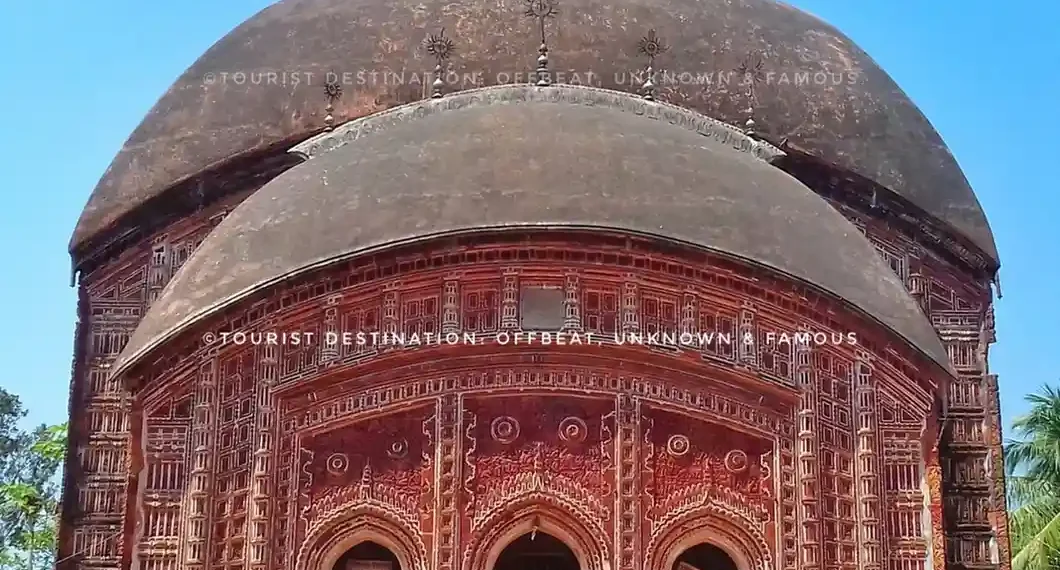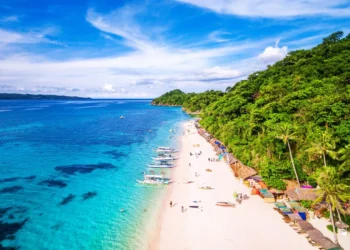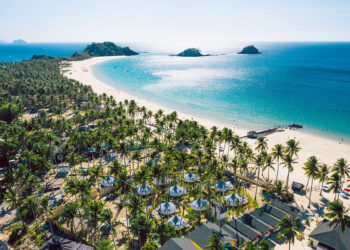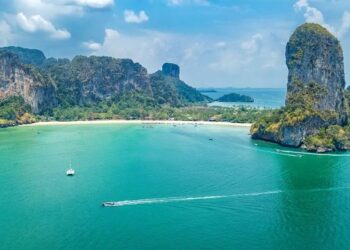The Antpur Radhagovindjiu Temple, in Antpur village, Hooghly, West Bengal, is a special shrine of worship dedicated to Lord Krishna and Radha. Known for its detailed terracotta carvings depicting stories from all the 18 puranas, it is in the Jangipara block of the Srirampore subdivision. This blog shares facts about the temple’s past, how it is built, why it matters for prayer, and how to visit, based on what is known.
History of Antpur Radhagovindjiu Temple
The Antpur Radhagovindjiu Temple was built in 1786 (1708 Shakabda) by Krishna Ram Mitra, a high official of Bardhaman Raj. Constructed when Muslim rule was fading and European power was growing, the temple aimed to keep Hindu devotion alive, as old records say. It is also important because Antpur is the birthplace of Swami Premananda (Baburam Ghosh), a close follower of Sri Ramakrishna. On December 24, 1886, Swami Vivekananda and eight others took their sannyasa vows of giving up worldly life here, which was a key moment for the Ramakrishna Mission. A nearby Ramakrishna Math, started in 1965 and joined by the Math in 1986, marks this with a temple at Swami Premananda’s birthplace.The temple is part of a larger area with other shrines for Gangadhara, Fuleswara, Rameswara, Jaleswara, and Baneswara. Antpur is also known for the Shri Shri Boro Maa Kali Puja, a festival 300 to 400 years old, held on Bhoot Chaturdashi in November. This puja, started at the Bandopadhyay house to stop a cholera outbreak, is said to have saved the area from the disease, and it draws many people each year.
How the Temple Is Built
The Antpur Radhagovindjiu Temple is 100 feet tall and built in the Bengali aat chala style, with an eight-sloped roof. Its walls and roof have terracotta carvings showing stories from all 18 Puranas, like tales of Radha, Krishna, and Goddess Durga. The Chandi Mandap, a wooden structure nearly 300 years old, looks like an upside-down boat and has carvings of Durga, Kali, Jagatdhatri, and others, made from jackfruit wood by local workers. The Dol Mancha, used for festivals like Dol (Holi) and Ras, also has terracotta and wood designs.
The main room holds a black stone idol of Lord Krishna with Radha. The temple area has a big lake with brick steps for bathing, a Ras Mancha for festivals, and a 500-year-old tree. The nearby Ramakrishna Math has a Dhuni Mandap, where the sannyasa vows happened, and a Gangadhar Shiva temple visited by Sri Ramakrishna, Sarada Devi, and Swami Vivekananda.
Things to Do at Antpur Radhagovindjiu Temple
Visitors can enjoy activities that mix faith, history, and the local area:
Join in Worship: Take part in daily prayers or festivals like Boro Maa Kali Puja, Durga Puja, or Ras to feel the temple’s ways.
See the Carvings: Look at the terracotta designs on the walls, Chandi Mandap, and Dol Mancha, showing old stories.
Visit the Ramakrishna Math: Check out the Dhuni Mandap and Gangadhar Shiva temple, tied to Sri Ramakrishna and Swami Vivekananda.
See Nearby Places: Go to Rajbalhat, 20 minutes by bus, for its terracotta temples, like the Radha Govinda Temple (1733) and Sridhar Damodar Temple (1724).
Walk in the Village: See Antpur’s fields, ponds, and small shops, or eat at local places to know rural Bengal.
Visiting Information for Antpur Radhagovindjiu Temple
How to Get There
The temple is in Antpur, 20 kilometers from Tarakeswar and 46 kilometers from Kolkata, with different ways to travel.
By Plane: The closest airport is Netaji Subhas Chandra Bose International Airport in Kolkata, 48 kilometers away. Taxis and buses go to Antpur through Dankuni or Haripal.
By Train: Haripal Railway Station, 13 kilometers away, has trains from Howrah on the Howrah-Tarakeswar or Howrah-Arambagh lines. From Haripal, take buses (routes 9, 9A, or 10) or auto-rickshaws to Antpur. Bahirkhanda Station is closer but has no direct bus.
By Road: From Kolkata, take Ahilyabai Holkar Road (State Highway 15) to Gajar More Bus Stop, then a 6-kilometer turn to Antpur. Buses from Howrah, Haripal, or Arambagh go to Antpur. Driving is good for seeing nearby places, but roads are narrow.
Temple Hours
The temple is open from 5:30 AM to 1:00 PM and 5:30 PM to 6:30 PM. Morning puja starts at 11:00 AM with a priest from outside. During festivals like Boro Maa Kali Puja or Durga Puja, hours may be longer. Ask temple workers for exact times.
Best Time to Go
The best time is November to February, when it’s cool, from 10°C to 25°C. The Boro Maa Kali Puja in November is busy but lively. Summers (April–June) are hot, up to 35°C, so go early. Rainy months (July–September) can make roads muddy.
Rules for Visitors
Wear proper clothes: men need shirts, trousers, or dhotis with a cloth over the shoulder and women need sarees, half-sarees, or churidar with a dupatta. Shorts, sleeveless tops, and jeans are not okay. Take off shoes, with a place to keep them. Don’t chew betel leaves, tobacco, or spit. Taking pictures inside may not be allowed, so ask first. For meals (bhog) at the Ramakrishna Math, sign up before 10:00 AM for food after 12:30 PM.
Final Words
The Antpur Radhagovindjiu Temple in Hooghly is a valued place for its terracotta art, deep hindu faith, and ties to the Ramakrishna Mission. Built in 1786 by Krishna Ram Mitra, it stands as a mark of Bengal’s culture, along with its glorious festivals and history with Sri Ramakrishna and Swami Vivekananda, making it a spot for prayer and learning. Also, visiting Antpur lets you feel Krishna’s presence and see the beauty of rural Bengal. Plan a trip to know its holy and historical meaning.











